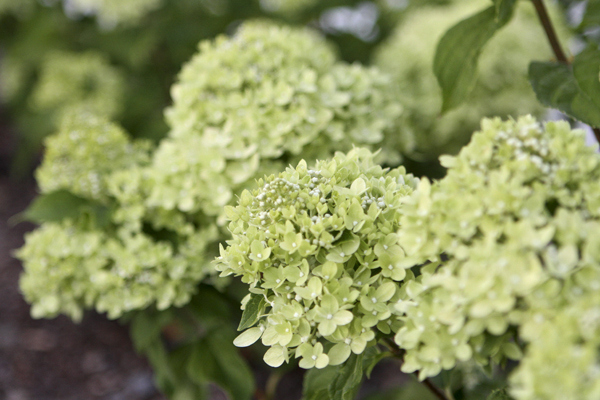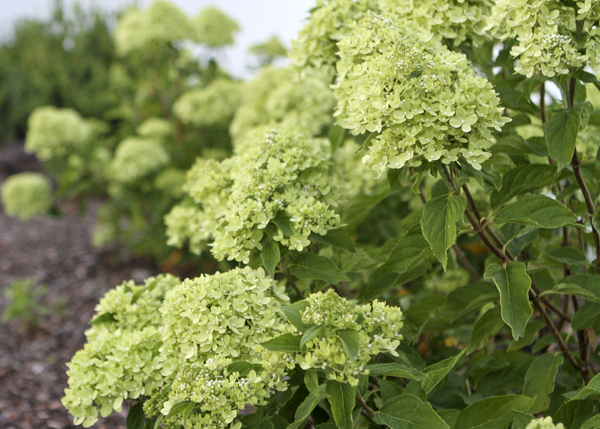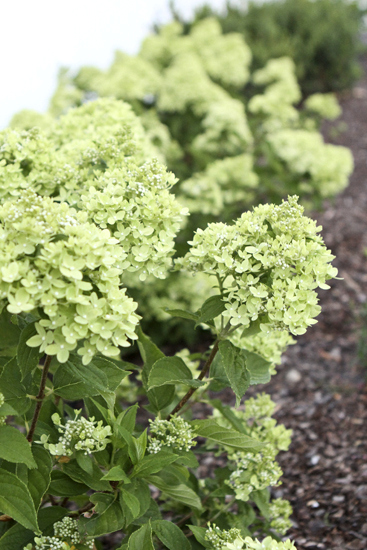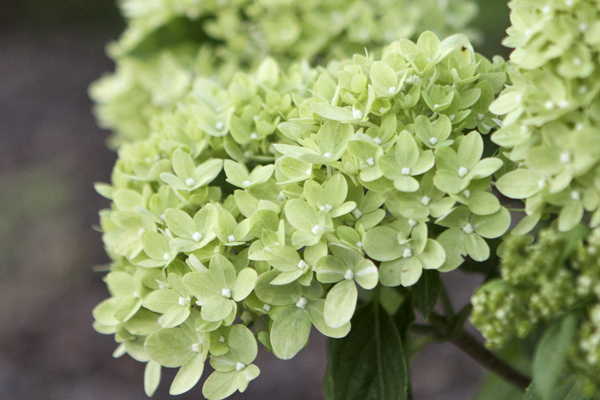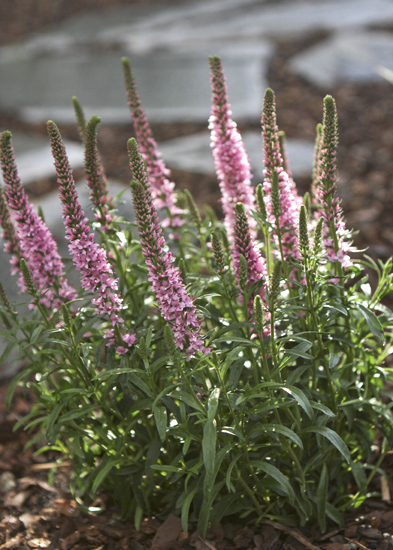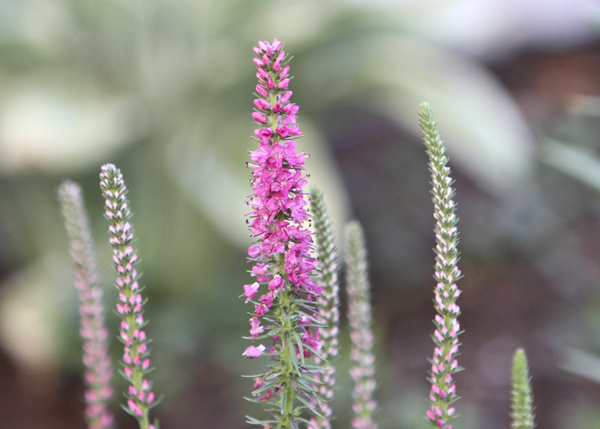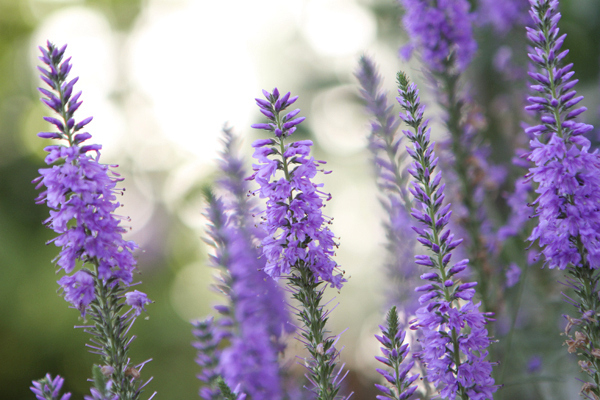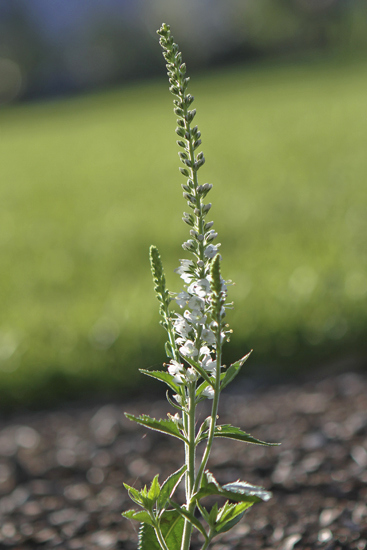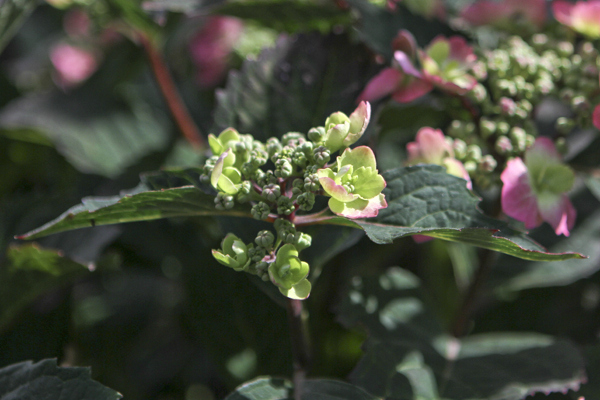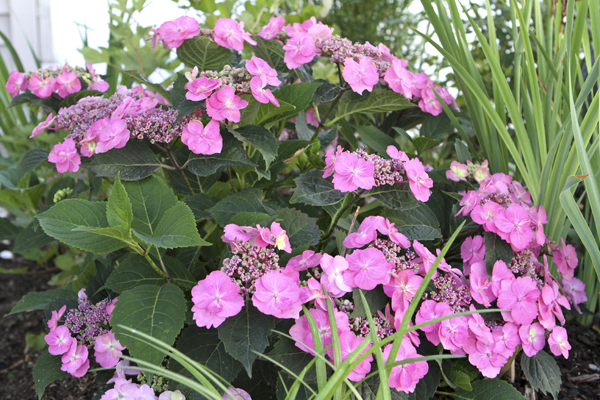
Last evening I made it over to the Spokane LDS Temple to take some photos of the annual flower beds in soft evening light. Some of the beds are looking full and pretty, but others are not at their best due to watering challenges and deer. Earlier this week several of us spent a morning assessing each of the thirty-nine watering zones and making many adjustments that should resolve the problems with dry spots, phew. These photos all show the beds near the entrance of the temple on the west side.
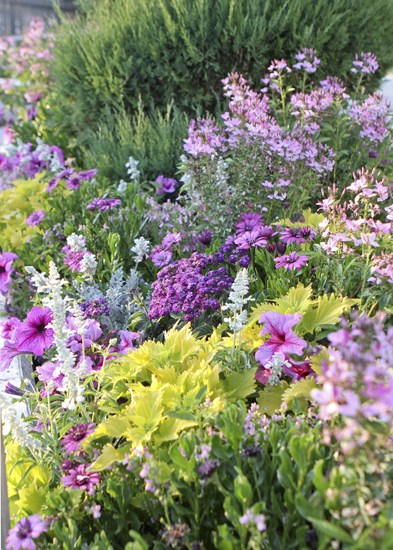
As a kid I loved to spend time organizing my crayon box in different ways. Now I get to do that with the annual flowers. I consider texture, form and height when designing, but color is really what most of us notice, right? The permanent groundcovers and perennials in this area bloom in mauve and blue-violet, so I include those colors in the annual flower scheme to tie everything together. How nice that mauve and blue-violet happen to be some of my favorite colors in the garden, especially when a punch of chartreuse, a deep note of plum and some ethereal white are added to the mix.

The plants shown in this photo are: mauve 'Sugar Daddy' petunias, 'Compact Pink Innocence' nemesia, 'Evolution White' salvia, 'Wasabi' coleus, 'Diamont Frost' euphorbia, 'Kent Beauty' oregano, violet 'Marine' heliotrope, '3D Purple' osteospermum, mauve 'Senorita Rosalita' cleome, and tall perennial Liatris spicata in the background.

I wasn't sure if the 'Wasabi' coleus would grow well in this mostly sunny area, but its leaves look healthy despite the warmer than normal temperatures we've had in the last month. Chartreuse leaves make such a nice foil for the other flowers. Thank goodness Marilyn - the landscape director - thought to add some extra drip lines to these beds, since we've often struggled with getting enough water to this area in past years.
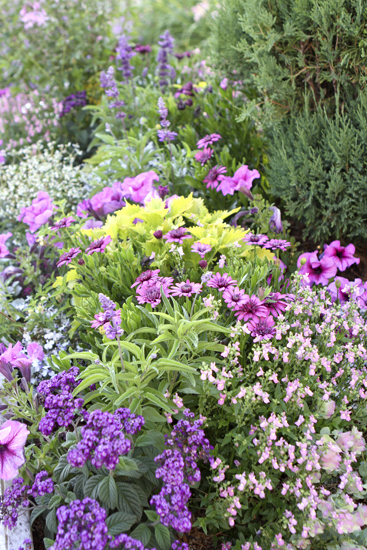
In this shot you can see a few violet 'Evolution' salvia spikes. Somehow violet salvia was planted on the north side of the entrance and white salvia was planted on the south side. It's just hard to keep it all straight on planting day with hundreds of plants and dozens of volunteers. It will be most obvious in September, when the salvia are at their peak, but even then I doubt many people will notice. At this point it doesn't seem wise to try to switch a few plants to even things out, since that would rip apart their established root systems and really stress them out in the heat.

The plum '3D Purple' osteospermum daisies were a new plant for us this year, and they've performed very well. They keep blooming even without diligent deadheading. Last year we were very impressed with the long blooming time and minimal deadheading of 'Opal Innocence' nemesia. This year I chose to use 'Compact Pink Innocence' nemesia because of its more vivid color and have been just as happy with this low maintenance, fluffly filler plant.
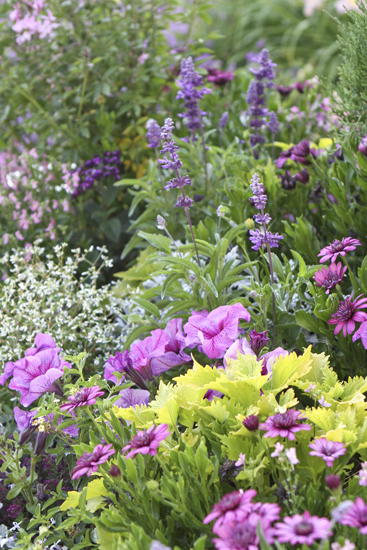
Last year (click here to see photos) we had grey licorice plant (Helichrysum) in this bed, and in general the flowers were paler. But I realized that since these beds are surrounded by grey concrete and white temple walls, we should use flowers with stronger colors. I'm happy with the changes that make the area more vibrant this year.
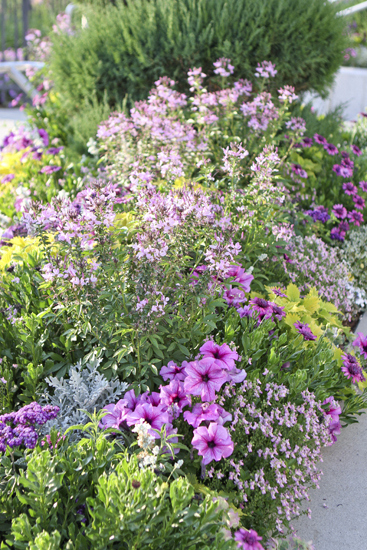
This photo shows several tall mauve 'Senorita Rosalita' cleome that have been a favorite with visitors. I guess older versions of cleome had an unpleasant smell and became sticky as they bloomed, but 'SR' doesn't have any of those drawbacks. It's a sturdy, deer-resistant, vigorous plant.

This final shot shows part of the bed just outside the front gate. In years past, we've planted this whole area with petunias and the deer have stayed away. This year they've been eating all the petunias and verbena except for these ones that are planted right around a light post. Sigh. Next year I'll switch over to more deer resistant annuals in this area. I'm already making lists of what to plant next year so we can turn in the order to our grower in January, plant a few thousand more annuals next May, and post more photos on this blog next July.

